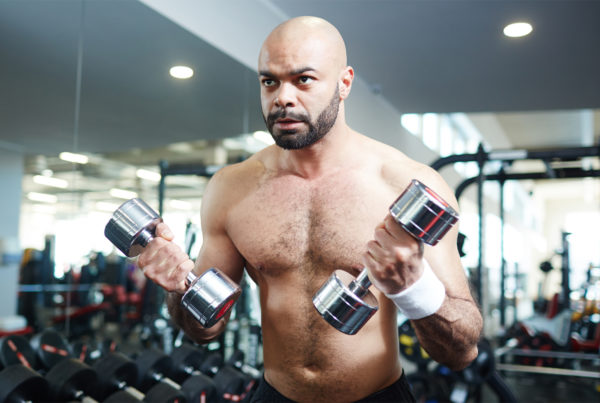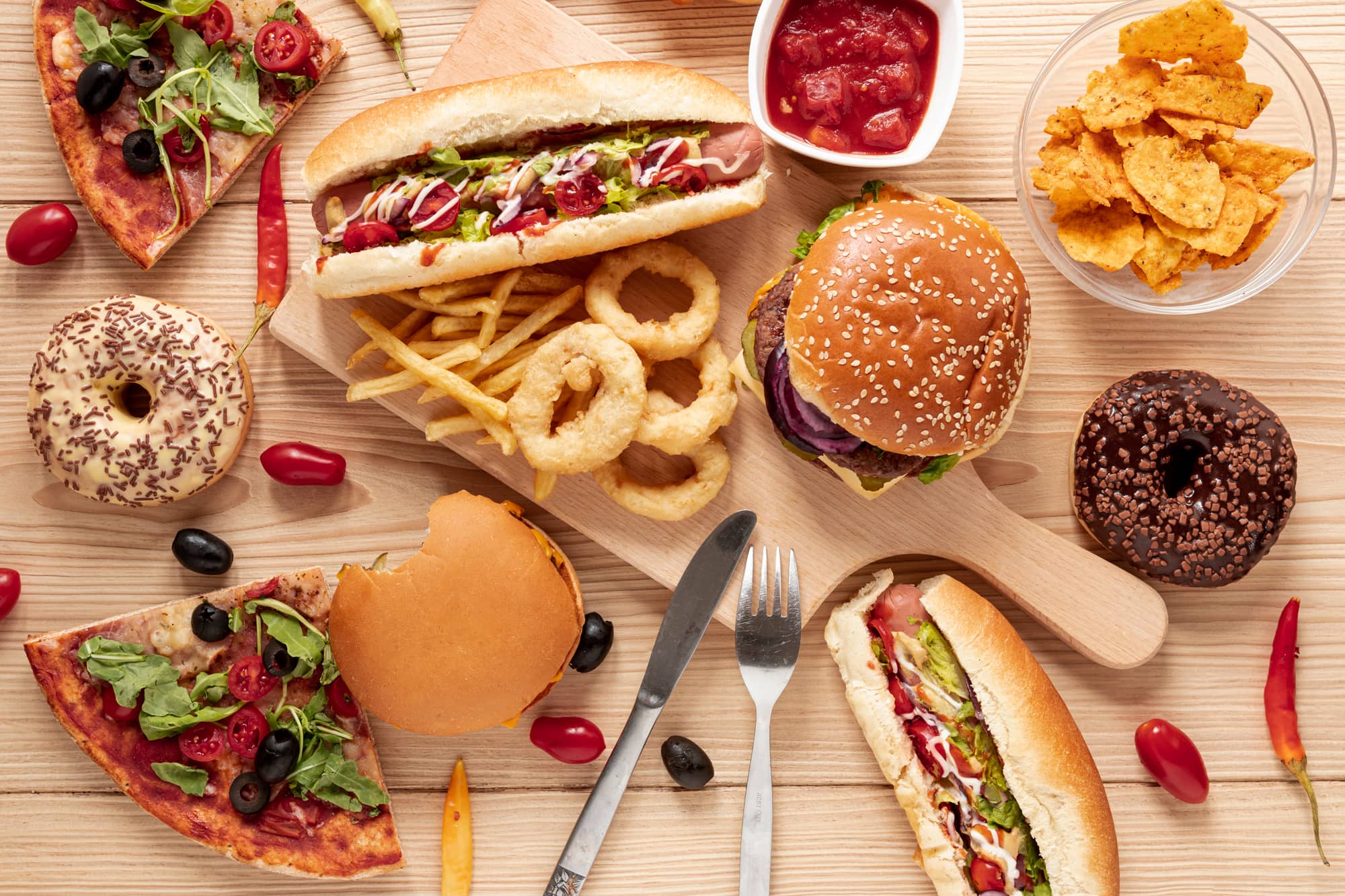
What is flexible dieting? With so many new fad diets popping up every month, it’s hard to keep up with the trends. Even worse, so many of these diets work for the first few weeks when motivation is high but rarely deliver in the long-term when your willpower takes a nosedive. So where exactly does flexible dieting stack up in the mix? Can it be used as a long-term dieting strategy and does it even work?
The Short Answer:
Yes. Flexible dieting allows you to eat whatever foods you want, within a set of rules, without having any of the calories be detrimental to your fitness goals. When learned and implemented correctly, it can be one of the most effective means of dieting. You can utilize flexible dieting to lose weight or burn fat, maintain your current weight or physique, and even to gain weight or build lean muscle mass.
Does Flexible Dieting Even Count as Dieting?
Yes! Yes it does!
I’ve personally experimented with almost every single diet imaginable (here’s my story if you’re interested) and flexible dieting is the one I’ve landed on permanently — and for good reason.
Like many of you out there, I struggled with my weight and dieting for many years. However, now I am able to effortlessly maintain an amazing physique carrying 10% body fat (or less) all-year-round. I attribute the majority of that success to flexible dieting.
The views expressed in this article will be slightly biased since flexible dieting is, of course, my preferred diet of choice. However, my opinion on the topic is also based on several years of personal experience and trial and error — not just a bunch of BS. And personally, I think that’s what counts most.
By the end of this article, my hope is that you’ll have a better understanding of what flexible dieting is, the long-term benefits that it provides, how it all works, and practicable ways you can implement it into your own life so that you can reap the rewards of what it has to offer.
When you’re done reading, leave a comment down below to let me know if I succeeded with that. And if I didn’t, tell me why. My mission is to make these articles as useful and informative as possible so that they provide real value. 😃
Here’s exactly what we’ll cover in this “What is flexible dieting” article:
Feel free to use the navigation box above to skip ahead at your leisure. However, if you want the full perspective on how to utilize flexible dieting successfully, read it all.
What Is Flexible Dieting?
If I’m being entirely honest and straightforward here, flexible dieting in a nutshell is essentially the fine art of eating whatever the f%#$ you want… in an informed and highly controlled manner. 😄
Utilizing the basic principle of thermodynamics (more on this in a second), flexible dieting allows you to follow an “eat-as-you-go” style nutrition plan that’s both easy-to-follow and free of any food restrictions.
When you really think about it, flexible dieting isn’t really much of a “diet” at all. Instead, it’s more of an intuitive nutrition plan, built for real life, that provides you with long-lasting lifetime results.
Eat Whatever You Want
I’m serious! You get to eat all of the foods you love to eat without having to swap them out for not-as-delicious diet alternatives.
For example: If today you wanted to eat pizza, then you’d eat pizza. Not some bogus “cauliflower crust” pizza with limited cheese and turkey bacon. The real deal ordered fresh from your favourite parlour with whatever toppings you want. 🍕
Don’t want pizza today? Maybe a burger? Well then go grab a cheeseburger! No, not a 100% ground turkey alternative on a whole wheat bun with only lettuce and tomato; a real delicious juicy full-fat 100% beef patty on a sesame seed bun with all the fixings. 🍔
And finally, if instead you were in the mood for a slice of decadent chocolate cake, then — your wish is your command — a slice of chocolate cake is what you shall have! Not some low-calorie version sweetened with stevia and erythritol. That’s not chocolate cake! I’m talking about the real deal Holyfield ladies and gentlemen! 🍰

I think you get the idea. 😄
Why Is Flexible Dieting So Effective?
Long-term sustainability is the single most important factor of any successful diet. For the majority of people, “healthy” diets are just too hard to stick to for long periods of time.
Of course, most people can commit themselves to a 30-day or even a 90-day weight-loss challenge, but when the competition is over, willpower is at an all-time low, and those sugar and carb cravings start kicking in, what do you do then?
The answer to that question for most people is… binge. 🤪
And the result, of course? You bounce back to your normal routine and all your months worth of hard work go down the drain.
Flexible dieting, on the other hand, isn’t really a “diet” at all. In fact, it feels like something you can actually stick to for the rest of your life — and that’s because you can.
No More Feelings of Food Withdrawal
No matter what weight-loss program you’re on, you’re always going to be placed into what is known as a “caloric deficit”. This is weight-loss 101: You must eat less food (calories) than your body uses for energy in order to lose weight.
This isn’t where the problem exists for most people. In fact, it seems like quite a reasonable ask: “Wanna lose weight? Eat less food!”
The main problem for most dieters arises when they are restricted from eating ALL of the foods that they love and adore so much.
After a certain period of time — usually a few weeks or months into their health program — their passion for food beats out their physique goals because they have a sudden moment of clarity.
They figure, “I love eating delicious food and now I can’t eat it! If this is what I have to do just to ‘look good’ and ‘be healthy’, then f#%$ this!” 😄

… and then this happens. ☝️😄
I was one of those people! And so I yo-yo dieted over and over and over again. I’d be in pretty good shape for the warmer months of the year and then in terrible shape — devouring all delicious food in sight — during the colder months.
Flexible dieting solves this entirely; no more food withdrawals — ever. 😋
It Follows the Laws of Thermodynamics
I love eating food! All types of food! Healthy foods and “unclean” foods alike. And I’m willing to bet that you do too.
It’s ALL delicious! And contrary to popular belief, none of the specific types of foods you eat make you fat. This is a HUGE misconception in the dieting world and with weight-loss in general.
Here’s the real truth:
Eating TOO MUCH food makes you fat.
Food of any kind! I know… Mind-blowing stuff, right? 🤯
Here’s the main gist of it:
- To lose weight, your calorie intake must be lower than your energy output.
- To maintain weight, your calorie intake must be equal to your energy output.
- To gain weight, your calorie intake must be greater than your energy output.
No matter WHAT diet you’re on, this will ALWAYS remain true.
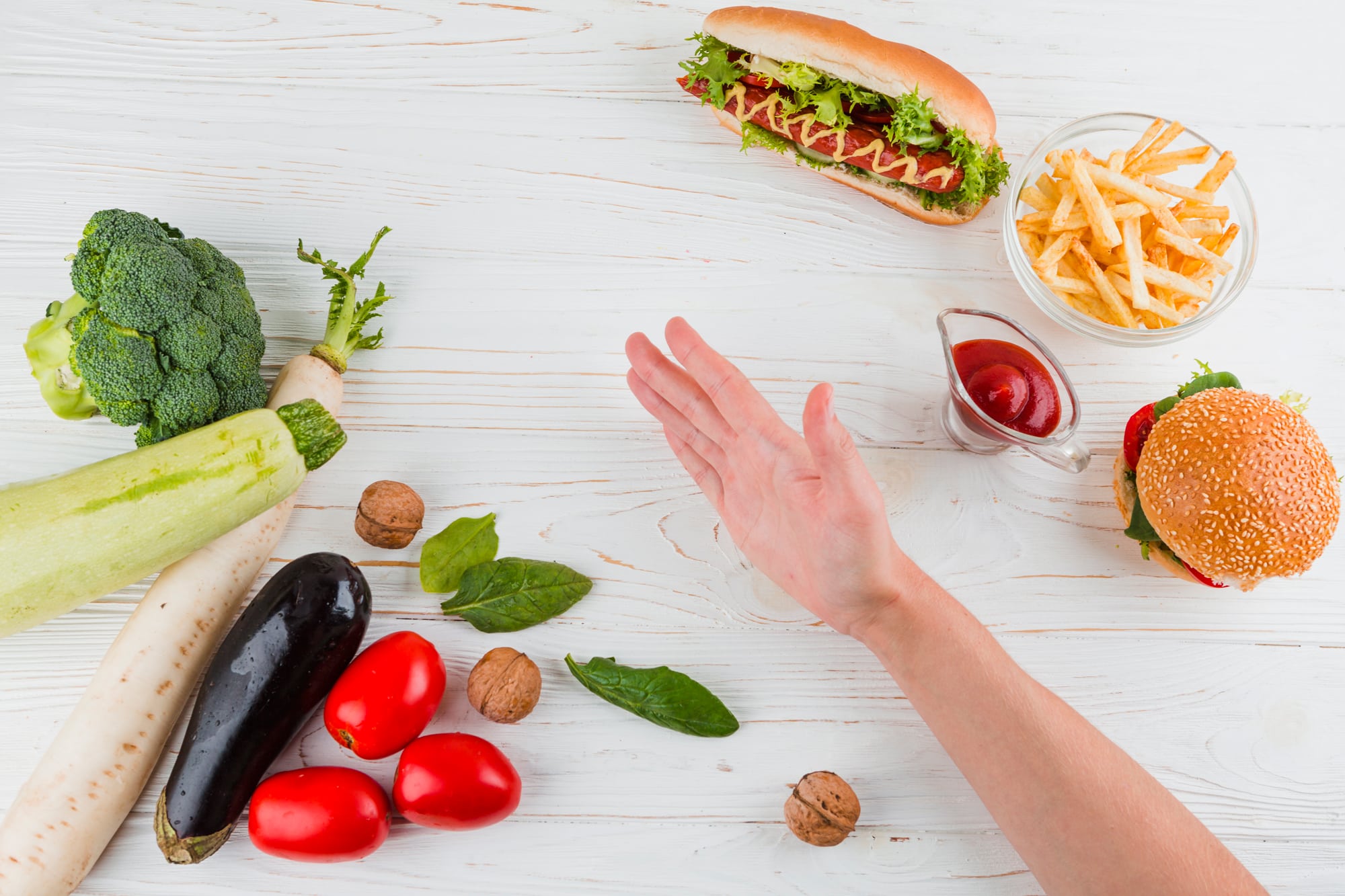
In other words, you can eat healthy food, such as chicken breast, broccoli, and brown rice all day long, but if you eat it in excess, you’re going to be overweight.
On the other hand, you could eat “dirty” foods, such as pancakes with syrup and whipped cream, bacon, and scrambled eggs for breakfast every single morning if you wanted to and still sport six-pack abs.
Scratching your head right now? Don’t believe me? Rolling your eyes? 🙄
It’s true. How do I know? Firstly, the law of thermodynamics! It’s science! 🤓🧪
Secondly, because every single thing I talk about on this blog is based on my own personal experience (and that of my clients). I don’t just talk about this stuff; I live it.
Continue reading and I’ll share a story with you where I conducted a personal experiment, using my own body, to put the laws of thermodynamics to the test.
For now, just believe it! Forget everything you THINK you know about food and dieting for a second. I’ll explain how all of this works in just a moment.
You Can Stick to a Flexible Diet for LIFE
So if the main contributing factor to whether you lose or gain weight is how many calories you eat, then why punish yourself by removing all of the things you love to eat?
Well, herein lies the main reason why flexible dieting is so effective: Your diet is based off of all the things you actually love to eat — some healthy, some unhealthy.
You don’t have to follow a boring restricted diet filled with foods you have no desire to eat. In fact, you absolutely shouldn’t follow this type of diet; or even be on a “diet” at all.

At no time should you feel guilty or even deprived while on a diet. You should feel good about your journey and your diet should feel natural and be a pleasure to adhere to.
Being a healthy person is all about living a healthy lifestyle. It’s not about completing a 90-day challenge or diet cycle.
And if we’re being honest here, no one is going to adopt a lifestyle that is completely null and void of all of their favourite foods.
Now, if all of the foods you love to eat happen to be healthy, that’s an entirely different story. But that certainly is not going to be the case for the majority of people out there.
With flexible dieting, you can include EVERYTHING you enjoy eating into your diet as part of an all-around healthy and active lifestyle that you can maintain for the rest of your LIFE.
The Bottom Line:
Flexible dieting is built for sustainable results that will last you a lifetime.
How Does Flexible Dieting Work?
If right now you’re thinking, “No way! This all sounds too good to be true!” then you’re right… but you’re also wrong.
Flexible dieting ISN’T too good to be true. It’s a real thing and it works!
The only catch is that although you can eat whatever you want, you can’t eat however MUCH of it you want.
Which, by now, should seem pretty fair and kind of logical, right?
You’re Not Allowed to Just “Pig Out”
Ah ha! The catch! Of course!
Well, if you simply ate whatever you wanted, whenever you wanted, and however much of it you wanted, then you wouldn’t be on a “diet” at all; you’d just be overweight. Duh! 😜
And since I’m presuming that’s not your main goal here, unfortunately, you can’t just be devouring cake every day like it’s your birthday; or you’ll be gaining a whole lot more than just baby weight.

By definition:
di·et
/ˈdīət/
noun
a special course of food to which one restricts oneself, either to lose or gain weight, or for medical reasons
This is precisely why I keep alluding to the fact that flexible dieting isn’t actually a “diet” at all. There are absolutely no food restrictions. NOTHING is off limits!
There are, however, calorie restrictions, but, as mentioned earlier, this is true for ANY diet.
So isn’t this a fair trade-off? I mean… let’s weigh out the options:
Option A: You can eat all of the foods you love — I’m talking entirely unrestricted food choices — while still being mindful of your calories and your goals; OR
Option B: You can eat baked chicken breast, brown rice with no gravy, and boiled broccoli with no butter seven days a week with a few totally unsatisfying low-fat snacks — oh — and, of course, have a “cheat meal” once every few weeks or so. 🙄 Bleh!
So… what’ll it be? Are you in or are you in? 😈
So… Are You IN?
Choose your dieting destiny:
Establishing the Ground Rules
w00t w00t! You’re in! That’s what I’m talkin’ about! Welcome to the party! 🥳
Earlier on in this article I said that flexible dieting is all about eating in an informed and controlled manner.
In order to be successful at flexible dieting, you need to know two main things:
- the amount of calories you need to eat daily to reach your goal
- how to track your calories so you can adhere to point #1
If you’re anything like the average person, I’m willing to bet you have no idea how to figure out how many calories to eat.
And rather than give you a set of formulas and have you break out your rusty BEDMAS skills to solve for the value of X, let me make it a bit easier for you.
All you have to do is use our Calorie Calculator 👈 and we’ll tell you exactly how many calories to eat. The best part is that it literally takes 60 seconds to figure out. Go hurry up and do that now and then we’ll move on to point #2.
Calorie Calculator
Want to know exactly how many calories you need to reach your fitness goal? We’ve got a calculator that does that for you!
All done? Awesome. Moving along. 👍
Effectively Tracking Your Calories
Now that you have the exact number of calories you need to eat daily in order to reach your fitness goal, you have to make sure that you adhere to this number.
This leads me to the Golden Rule:
You MUST track ALL of the food (calories) you put in your mouth.
The rule applies to whatever diet you’re on; not specifically to flexible dieting.
And just in case you’re wondering, “Do I REALLY have to track my calories?” ?
The answer is simple: yes. You can’t cheat thermodynamics, remember?
Let’s Be Real for a Moment
I get this question from beginner and intermediate dieters so often that I have to bring it up and set the record straight.
This is partly why I hate the fitness industry so much and also one of the main reasons I founded MyQuest Health & Fitness to begin with.
Excuse me for being blunt, but I’m just really fed up with “certified” nutritionists, “educated” dieticians, and fitness “experts” spreading bulls#!% information and having people who are new to dieting treat it like the gospel.
Anyone telling you NOT to track your calories is one of the following:
- a complete idiot; or
- a very experienced dieter
If they’re candidate #1, you’ll be able to tell this right away since they obviously won’t be sporting an amazing physique themselves.
And if they DO have an amazing body, then they’re clearly candidate #2.
Experienced dieters have a really bad habit of giving extremely misleading dieting advice simply because they’ve gotten so used to managing their caloric intake that it has become completely natural and intuitive to them.
In other words, they’re still VERY aware of their daily caloric consumption; they just don’t have the same focus or attention to detail as that of a beginner because it’s just a normal part of their life now.
How to Track Your Calories
Tracking your calories may seem daunting at first, but with more and more repetition, it is something you can pick up very quickly.
Eventually you become so efficient at counting and tracking your calories, that you just start seeing your food in numbers; much like Neo in the famous movie, The Matrix.
This is a topic I’ve covered in great detail in a previous article, so I won’t go into too much detail here. If you want to learn more, check out the article: Calories 101: A Beginner’s Guide to Counting Calories.
Instead, what I will discuss quickly is one of the easiest tracking methods available to you: the MyFitnessPal app.
Here’s a sneak peek at the app in case you’re interested:
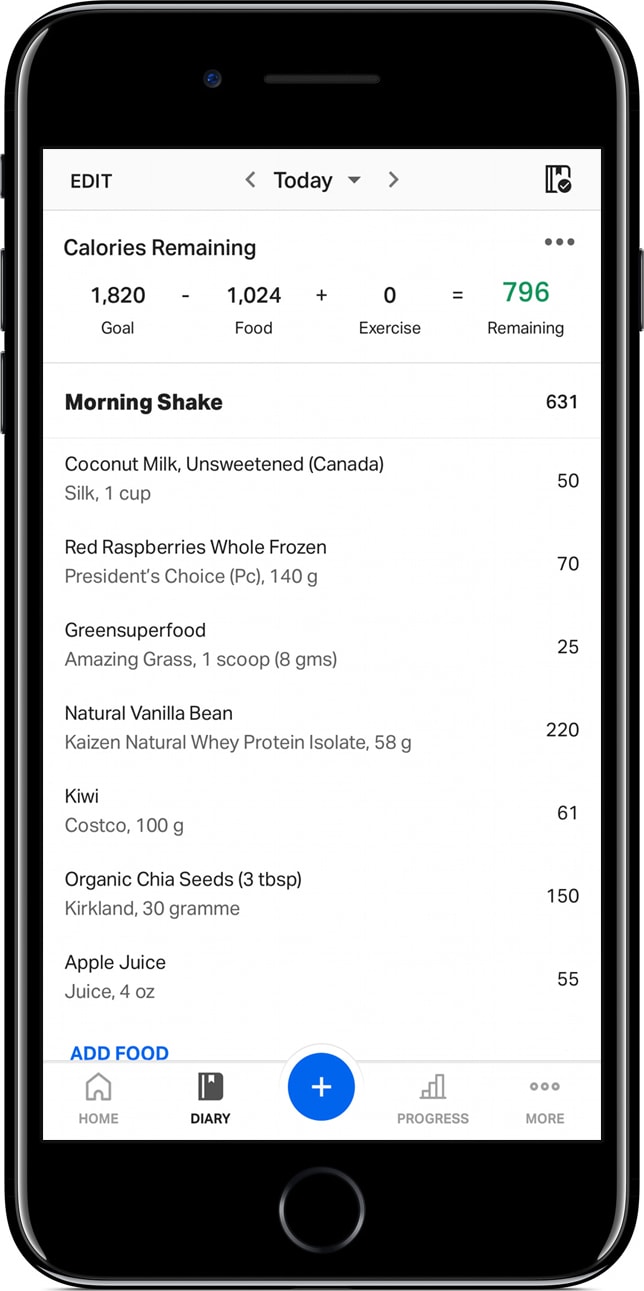
Track Food Intake
MyFitnessPal allows you to easily and effortlessly track your daily food intake on your phone, tablet, or smart watch while on the go.
Nutrient Tracking
If you're into tracking your macros and other food nutrients, the app calculates all of this for you automatically with zero fuss.
App Integration
MyFitnessPal integrates with other popular health apps such as Apple Health, FitBit, and more. It's even compatible with Amazon Alexa.
Extensive Food Database
MyFitnessPal has one of the largest searchable food databases out of any tracking app. You can even scan food items by their barcode.
Track Food Intake
MyFitnessPal allows you to easily and effortlessly track your daily food intake on your phone, tablet, or smart watch while on the go.
Nutrient Tracking
If you're into tracking your macros and other food nutrients, the app calculates all of this for you automatically with zero fuss.

App Integration
MyFitnessPal integrates with other popular health apps such as Apple Health, FitBit, and more. It's even compatible with Amazon Alexa.
Extensive Food Database
MyFitnessPal has one of the largest searchable food databases out of any tracking app. You can even scan food items by their barcode.
App Integration
MyFitnessPal integrates with other popular health apps such as Apple Health, FitBit, and more. It's even compatible with Amazon Alexa.
Extensive Food Database
MyFitnessPal has one of the largest searchable food databases out of any tracking app. You can even scan food items by their barcode.
P.S. I don’t get paid any commissions for recommending this app. I just think it’s really useful! If you want to track your calories efficiently, then download it!
MyFitnessPal is suited for beginners, intermediate, and advanced dieters alike. In fact, I still use this app til this day and I’d consider myself a calorie tracking ninja at this point in life.
The highly extensive searchable database and ability to scan items via barcode makes tracking food intake an absolute breeze.
I haven’t created an article on exactly how to use this app because it’s extremely user-friendly, but if it’s something you’d like to see, leave a comment below and let me know, and I may consider writing one.
Understanding Food Value
Food value vs. food volume is an important concept to understand, as it will make or break your success on a flexible diet.
To make this as easy as possible, I will summarize the main concept using a very simple but highly effective image comparison.
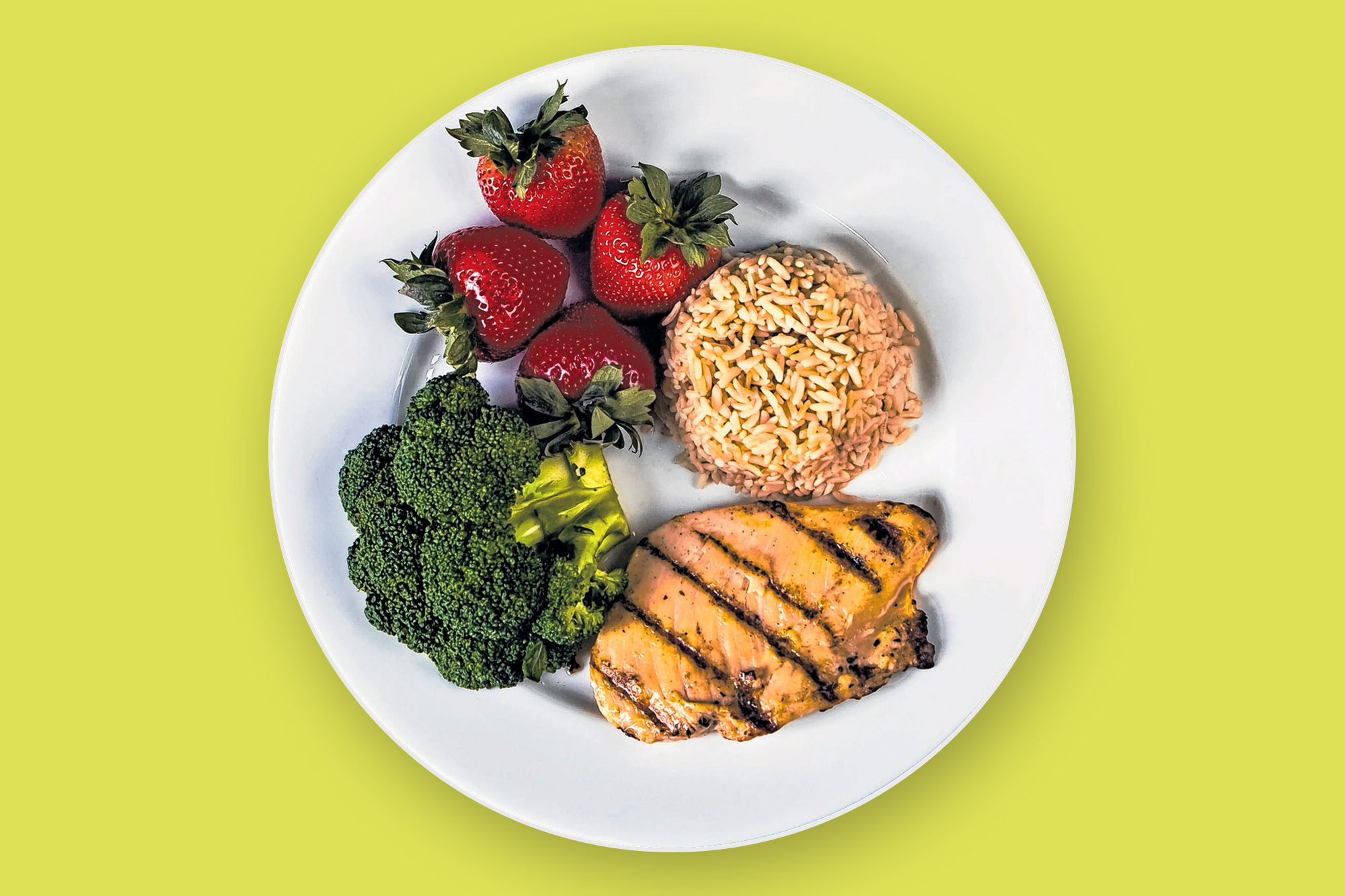
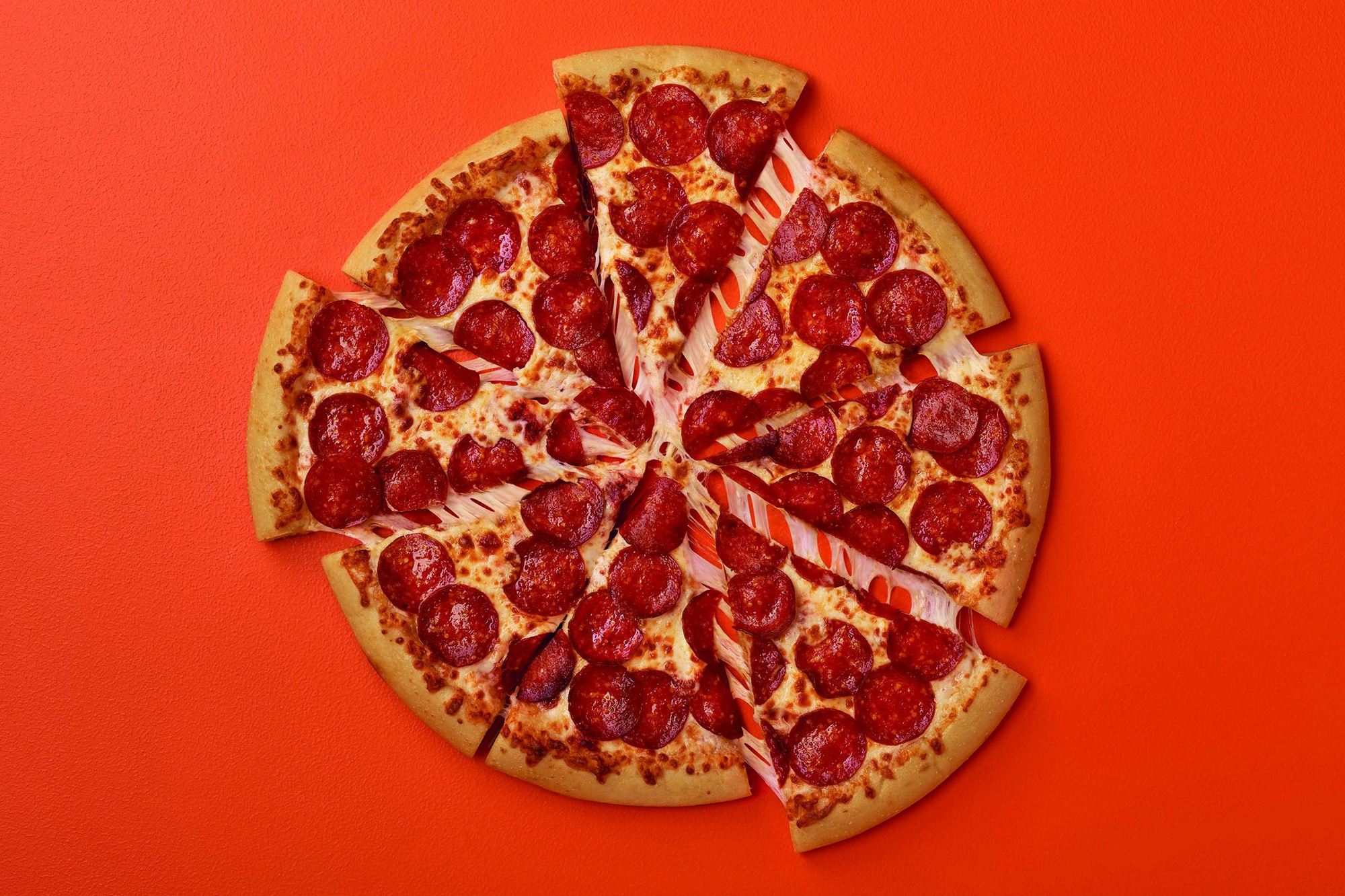
Whole Foods (Left)
This entire plate of food has only 450 kcal of completely balanced nutrition and will keep you satiated for longer.
Pepperoni Pizza (Right)
Two slices of this delicious pizza gives you 500 kcal worth of temporary satisfaction with very little nutrients.
And just in case you were toying with the idea of eating the entire pizza, that would be a whopping 2,000 calories. For most people, that would be their entire calorie limit for the day! 😅
The main question is: Which do you think would satisfy your hunger for the longest?
This would change from person to person, as we all have entirely different eating habits and tendencies.
However, this image comparison highlights the importance of choosing your meal items very selectively throughout the day or even strategizing for the week.
As I briefly mentioned earlier, flexible dieting is a fine art. We’ll get into a few clever strategies in just a moment.
Does This Sound Like Too Much Work?
Are you scratching your head right now completely overwhelmed and confused wondering how the heck you’re going to figure this all out on your own? Don’t stress.
As with most things in life, practice makes perfect. And in time — with a bit of trial and error — you’ll eventually figure out a system that works perfectly for you.
If you don’t feel like experimenting and would rather get started right away with a flexible nutrition plan tailored to your exact needs, you’re in luck!
That’s actually exactly what we do with our MyQuest Coaching program.
Apply for Coaching TODAY!
Because yesterday you said tomorrow.
We perform a comprehensive needs assessment to learn everything about you — your goals, your fitness level, your eating preferences, and more — and then we build a fully-customized fitness program for you from scratch.
Sound like something you’re interested in? Click one of the buttons up above. ☝️
The Bottom Line:
Flexible dieting is a highly strategic approach to nutrition built around the calories in, calories out principle. You’ve got to track your calories to be successful.
Common Strategies for Flexible Dieting
If you’ve made it this far into the article, then I think it’s safe to say that A) you now have a good understanding of just how “flexible” this whole flexible dieting thing can be; and B) you’re interested in using it yourself.
So let’s discuss a few different ways you can implement a flexible dieting approach into your life starting right away.
There are really three main concepts or strategies for effective flexible dieting:
- The Balanced Approach
- The Weekend Approach
- The Freedom Approach
The Balanced Approach
This is the strategy I would recommend for most people and the one that I recommend for most of my clients. In a second, we’ll also discuss my second favourite option; I actually use both.
The balanced approach uses what I call the “majority principle”.
The concept is simple: Each day you’ll opt for healthier whole food options 70% of the time and the rest of your food — the remaining 30% — can come in whatever form you’d like.
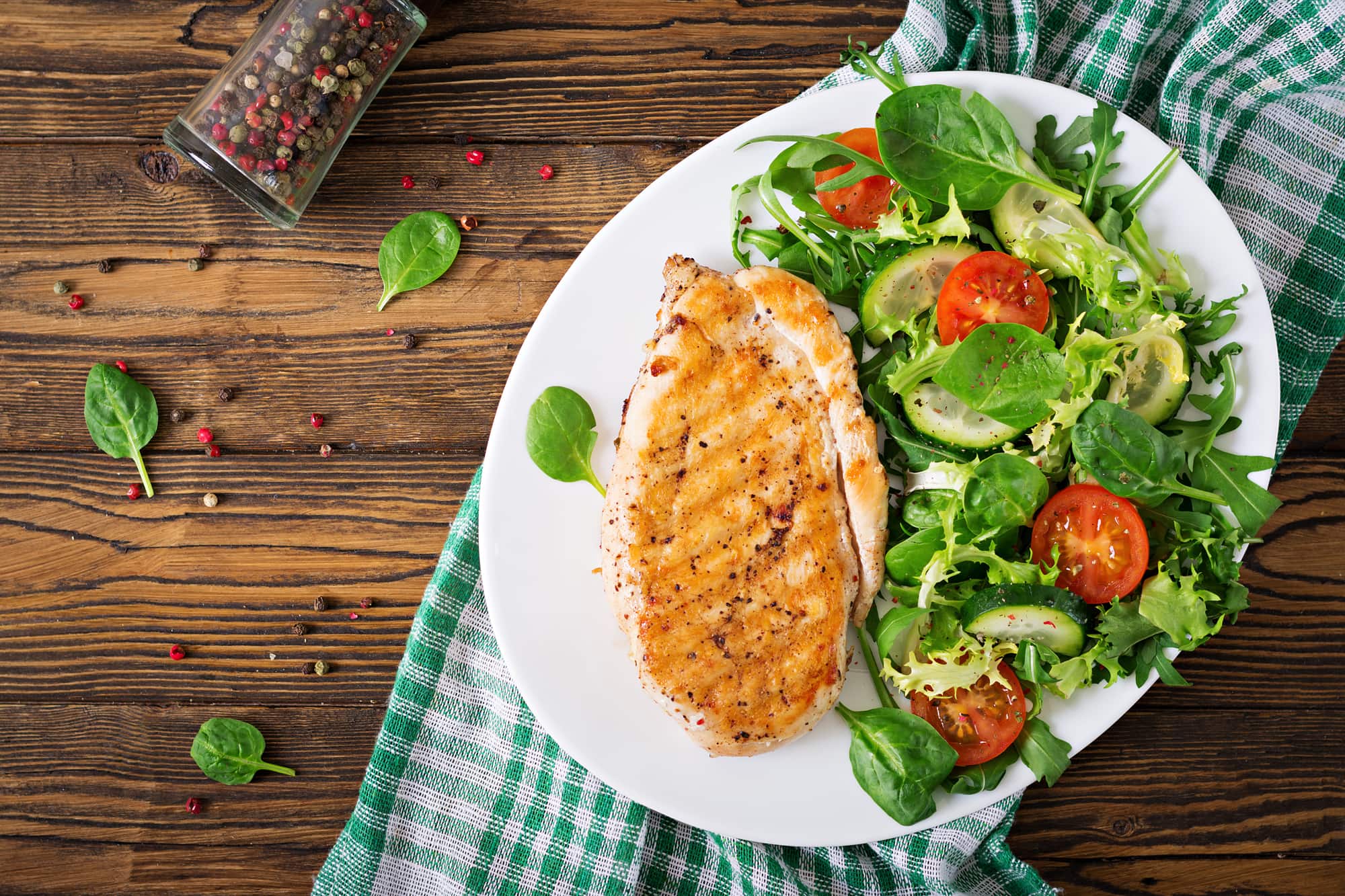
What does that look like? Whatever you want it to look like. Take your pick:
Whole Foods (70%):
- Eggs, Poultry, Meat, Fish, etc.
- Fruits
- Vegetables
- Starchy Vegetables
- Whole Grains
- Healthy Fats
- Legumes
- Seeds and Nuts
Everything Else (30%):
- Pizza, Burgers, Hot Dogs
- French Fries
- White Bread, Bagels
- Chips, Crackers, etc.
- Cookies, Baked Goods, etc.
- White Pasta, White Rice
- Chicken Nuggets, Wings
- Whatever Else You Love
The world is truly your oyster here. You’re legitimately free to do whatever you’d like with 30% of your calories each and every day.
For some, that might mean having a slice of strawberry shortcake every night after dinner. For others, that might mean having a large slice of cheesy pizza for lunch.
For me personally, I like to mix it up week to week! That’s the funnest part with flexible dieting! Once you’ve mastered the craft, every day you get to eat something new off of every other dieter’s “restricted” list.
What might that look like? Let’s take a look at an actual meal plan:
| Meals | Day 1 | Day 2 | Day 3 |
|---|---|---|---|
Breakfast | Peanut Butter Banana Protein Shake | Eggo Waffles with Syrup and Whipped Cream | Scrambled Egg Whites with Whole Grain Toast and Peanut Butter |
Lunch | Teriyaki Glazed Salmon with Rice and Stir-Fry Vegetables Snack: Ferrero Rocher | Cobb Salad with Grilled Chicken Breast | Ground Turkey with Sweet Potato Mash and Kale Slaw |
Dinner | Jerk Chicken with Rice and Peas, and Steamed Veggies | Whole Wheat Chicken Pasta Alfredo with Broccoli | Baked Halibut with Grilled Asparagus Dessert: Cheesecake |
As you can see, since I’m generally focused on some sort of particular fitness goal, the balanced approach always keeps my health as a priority while still allowing daily indulgences.
Of course, all of the portion sizes would be in line with my daily caloric allowance.
Truthfully, there may be some days that I’m so focused on my goals that I don’t even feel like opting for anything off my 30% list; I’ll just stick to clean eating for the entire day.
If you’re new to flexible dieting and have already set some fitness goals that you want to take seriously, I would definitely start with the balanced approach.
The Bottom Line:
The balanced approach is what I personally use throughout most of the year as it is quite versatile. It’s also the strategy I recommend to the majority of my clients.
The Weekend Approach
The weekend approach is an extremely satisfying strategy and one that I employ quite often, especially when I have a lot of weekend social events to attend.
This strategy also works great for the summer months since most people tend to spend a lot of time eating out and drinking on the weekends with friends and family.
The concept is simple: Follow a well-structured diet throughout the weekdays consisting mainly of healthy whole food selections and nutrient-dense food options; and when the weekend hits, go crazy with family and friends! 🥳

This strategy is great because you’re still technically following the majority principle we talked about in the balanced approach; just not on a daily basis.
In other words, 5 days out of the week (70% of the week) you’re eating healthy and 2 days (the other 30% of the week) you’re eating whatever you want for both days.
Your lists, of course, remain the same, except now they’re tied down to specific days:
Weekdays (70%):
- Eggs, Poultry, Meat, Fish, etc.
- Fruits
- Vegetables
- Starchy Vegetables
- Whole Grains
- Healthy Fats
- Legumes
- Seeds and Nuts
Weekends (30%):
- Pizza, Burgers, Hot Dogs
- French Fries
- White Bread, Bagels
- Chips, Crackers, etc.
- Cookies, Baked Goods, etc.
- White Pasta, White Rice
- Chicken Nuggets, Wings
- Whatever Else You Love
I find this strategy particularly useful for people with very busy work weeks. It’s a lot easier to plan your meals and stay structured while you’re super focused on your work.
On the weekends, however, it’s much easier to stray from a strict diet since you’ve got so much free time on your hands and you can be easily distracted.
So, what might this look like in a real-life situation? Let’s have a look:
| Meals | Weekdays | Saturday | Sunday |
|---|---|---|---|
Breakfast | Scrambled Egg Whites with Oatmeal and Coffee | Scrambled Eggs with Bacon and Pancakes | Belgian Waffles with Syrup, Whipped Cream, and Fresh Strawberries |
Lunch | Grilled Chicken Breast with Quinoa and Stir-Fry Vegetables | Cheeseburger with all of the fixings and Onion Rings | Tacos with Refried Beans and Fries Supreme |
Dinner | Beef Tenderloin with Mashed Potatoes and Spring Mix Salad | Pasta Bolognese with Tiramisu | All-Dressed Pizza with Gelato |
As you can see, during the week my meals are comprised solely of nutrient-dense whole foods; however, once the weekend hits, it becomes a free-for-all!
Also, if you’re eating most of your meals at restaurants, a lot of restaurants make it pretty easy to track your calories by displaying the nutritional information right on their menu.
Do keep in mind these numbers aren’t entirely accurate, but at least you can use these numbers as a general guideline to stay on track for the week.
The Bottom Line:
If you’re a highly social individual or just love dining out, drinking, and partying on the weekends, then this is definitely the strategy that’ll work best for you.
The Freedom Approach
This is definitely the most aggressive style of flexible dieting and yields the highest rewards for your taste buds. A flexible dieter utilizing the freedom approach eats whatever they want whenever they want.
They’re not exactly concerned with the nutritional aspect of their diet. As long as they’re within their daily calorie requirements, they’re content.
This approach doesn’t even require a sample meal table since the concept is simple: You have 100% entirely unrestricted food choices throughout each and every day.
A full day of eating for them can easily look something like this:
Breakfast: Pancakes with syrup and whipped cream
Lunch: Slice of pizza with fries
Dinner: Sushi
Snacks: Chocolate chip cookies and a small bag of potato chips
Out of all of the strategies discussed in this section, this one has the most freedom, but — as I’m sure you’ve figured out — is also the least healthy.
If your main priority is to reach your fitness goals by adopting a healthy yet flexible lifestyle, I would strongly advise against this technique.
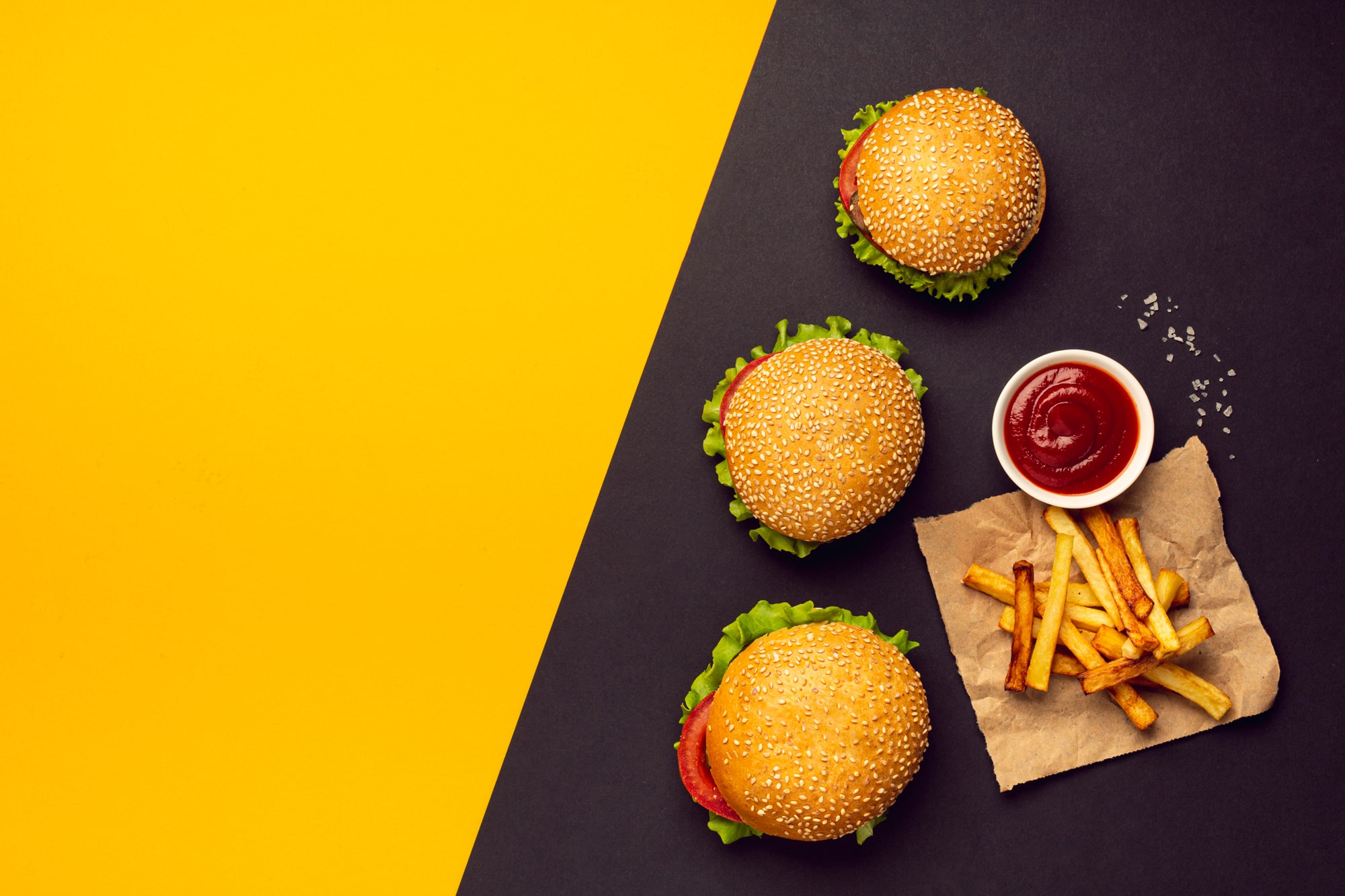
The McDonald’s Experiment
Several years ago, as part of a self-experiment, I actually utilized the freedom approach for 6 weeks straight to test the theory as to whether or not it was actually all about the calories.
After achieving a body fat level of around 8%, I ate McDonald’s every single day — within my caloric maintenance range — for 6 weeks straight.
There were absolutely no limitations on my food choices whatsoever.
For lunch, sometimes I had a BigMac and other times a Double Quarter Pounder with Cheese. For dessert, some days I had apple pies and other days a random flavour of McFlurry.
I limited my beverages to diet soda and water only so that I wasn’t drinking my calories. This way I could eat more food, which kept me a bit more satiated throughout the day.
And the result? 6 weeks later, I was still just as shredded and didn’t gain a single pound of weight or fat.
Now, I will note that though I was able to maintain my physique, there was a notable difference in the way that I felt. I felt like s#!%.
Eating junk food can be very satisfying both mentally and emotionally, but our bodies don’t exactly enjoy highly processed foods.
I was also extremely hungry most days since junk food is, of course, loaded with empty calories (primarily fat and sugar) and isn’t nearly as satisfying as whole foods.
Regardless, I was absolutely able to maintain my physique.
So, why did I share all of this information with you if I’m not going to recommend it as a practical or healthy way of dieting?
Because I want to change your perspective on the concept of food as a source of energy.
Although this strategy is not exactly “healthy” by any means, I want you to know that it is still entirely possible to eat like this and not be overweight.
In other words, I don’t want you to fear the food you eat.
The Bottom Line:
The freedom approach definitely works because you’re still limited by calories. However, if you’re focused on bettering your health, steer clear of this strategy.
Need Some Help With Your Diet?
Putting together a flexible dieting plan that fits your lifestyle while staying in line with your goals and getting you results can be difficult to do if you’re just starting out.
Not sure where to begin? Let us help you discover your path to better health.
In our MyQuest Coaching program we perform a comprehensive needs assessment and then build you a fully-customized fitness program tailored to your every need.
This includes the implementation of a fully flexible diet as we discussed here today, built specifically for you, and much more.
If this sounds interesting to you, click one of the buttons below to get started:
Apply for Coaching TODAY!
Because yesterday you said tomorrow.
Final Thoughts
The thought of being on a flexible diet can be daunting and there are still a lot of people who either don’t think it works or decide not to follow it because they don’t think it’s “healthy”.
Here’s the thing: The concept of being “healthy” is entirely open to perspective.
In my opinion, as long as you’re using a balanced approach, which includes healthy nutrient-dense foods as part of your flexible dieting plan, you’re going to get results and meet most, if not all, of your dietary needs.
If one of your biggest struggles when on a diet is being restricted from eating what you love and having to make “healthy” meal decisions when eating out, then flexible dieting is your solution.
It gives you the freedom to eat whatever you want, without ever feeling guilty about it, and the opportunity to lead a healthy lifestyle for LIFE.
If you give this a try, I can promise you there is pretty much no turning back.
I’m interested: What are your thoughts? Do you agree with me on any of this? Do you disagree with me? Have you tried flexible dieting in the past? Which approach did you use? Were you successful in reaching your goals? Did you stop or are you still using it? Why? Leave a comment down below and let me know!











